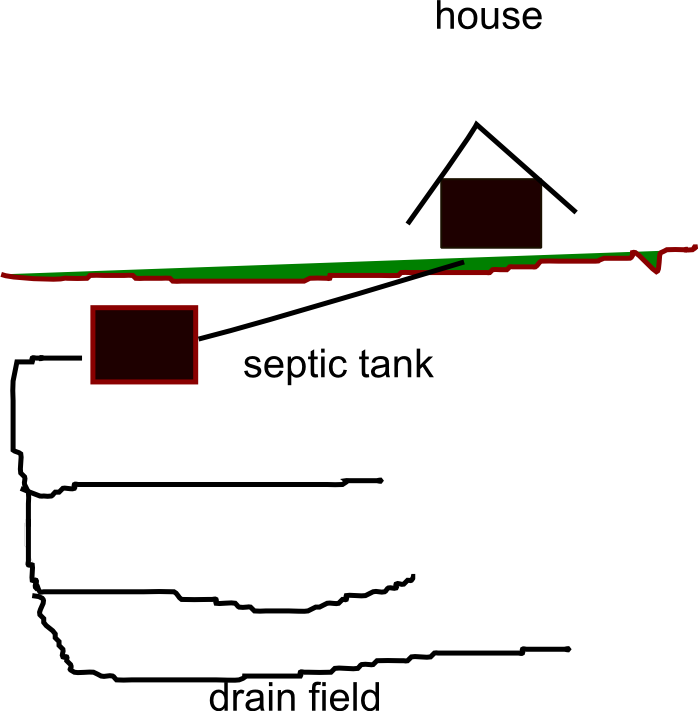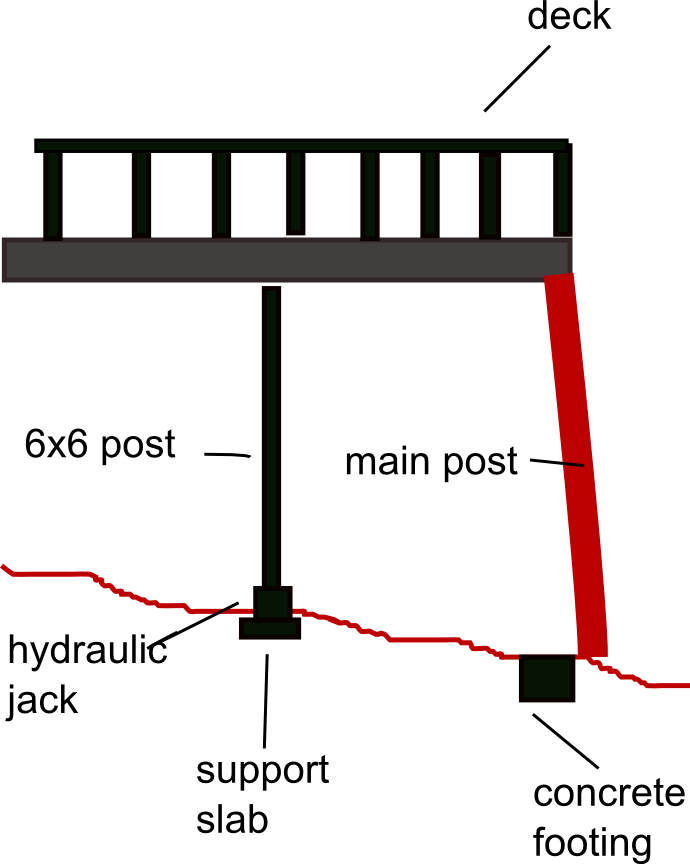The log cabin was built in 2002. I call it “the log cabin” actually its a house with basement and two levels and the exterior is “D” siding which makes it look like it is constructed from logs. An attractive finish but it requires annual care with repainting flaking spots and replacing bits of siding which have deteriorated. I purchased it in 2008 and have maintained it and upgraded it such as the wood stove recently installed. It appears well constructed but there are tells that some of the work was not up to grade. For example the concrete pad for the carport was a couple inches too short so the posts which support the roof are only partly seated on the pad.
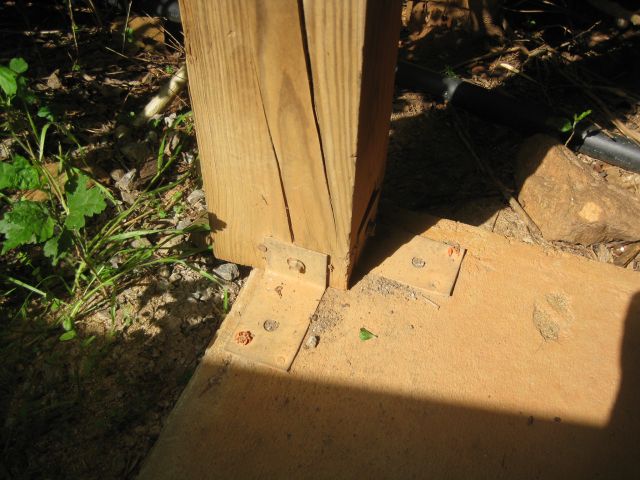
But this is a fact not an aggravation. The leak in the steel roof and the ill designed gutter which poured water on the chimney exterior and caused a lot of damage was aggravation but the fixing is a story for another time.
The two slip ups subject of this post were not quickly identified. The house has a septic system which means the waste water and contents are channeled to a septic tank where they biodegrade and then move to the leach field where they enter the soil via perforated pipes (the sketch below should not be interpreted to mean the perforated pipes are below the tank, they are to the side of the tank and a few feet below soil level). The tank is a rectangular concrete constructed box with a concrete lid and the lid is about 3 ft below soil surface. The sewer pipe from the house enters the tank about 2 ft below lid height so it is 5 ft below soil surface.
Recently the septic system stopped working. Quite easy to determine if you visited the area of the basement toilet and noticed the floor was wet. I ‘phoned Lenny (not his real name) who is the respected county expert on septic tanks. With his backhoe he quickly uncovered the septic tank lid and removed it with a chain fastened to the backhoe bucket.
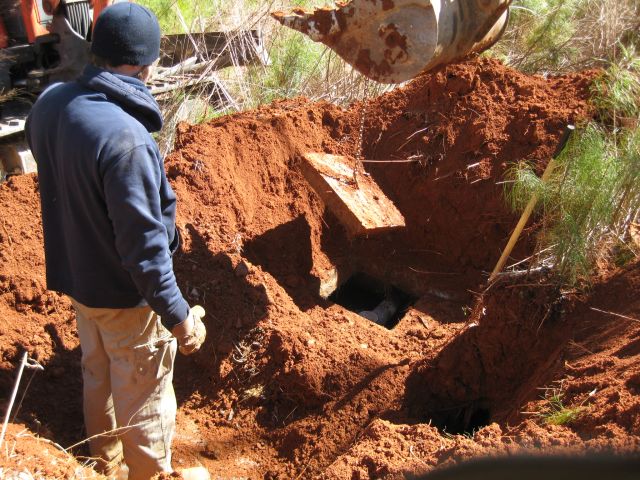
The good news was that the tank contents were at normal level which meant there was no problem with the tank or the leach lines. I had been concerned that the many volunteer trees had directed their roots to infiltrate the leach lines and that these had clogged. So therefore the problem was either a clog in the sewer pipes in the house or a clog in the pipe between the house and the tank. Lenny donned his elbow-high work gloves and with a “snake” vigorously attacked the pipe.
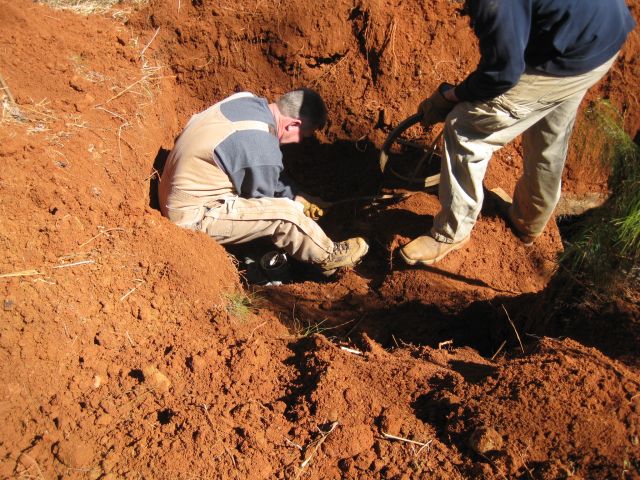
Almost immediately something gave and with a whoosh the dammed contents flooded the tank. But, while I was relieved Lenny was dissatisfied. He had me flush the toilets numerous times and worked the snake up and down and informed it it wasn’t right and there was a problem and I should call in a plumber. He refused to accept more than $50 for his work since he “hadn’t fixed the problem”. His parting words were “get a plumber”.
Well, the system seemed fine and I felt he had been over cautious and so naturally I did nothing until 2 weeks later when the problem recurred. Lenny had given me two references and one came over with a snake and in line camera, call him “Pete”. Even before starting, Pete said he was sure the line had parted and the pipe would have to be dug up. Nonetheless, at my urging he sent in the camera which did not give clear video since the line was filled with liquid. Next he sent in the powered snake which kept hitting something hard and was ineffective. Pete explained that the line had separated and the teeth of the snake were hitting the lip of the parted line. A few days later he returned with his backhoe and crew.
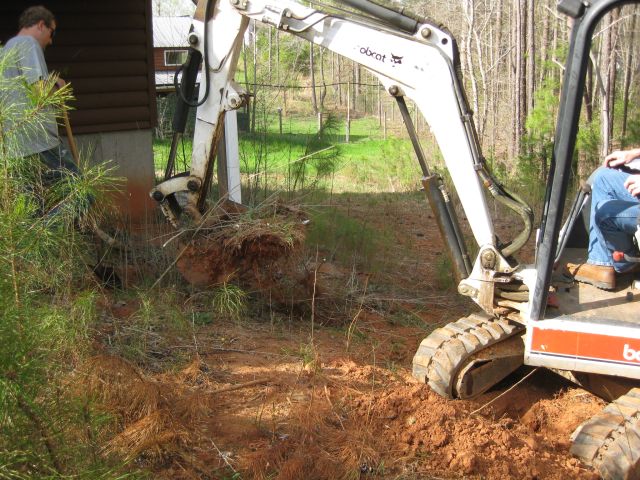
I showed Pete where the tank was buried. Between the house and the tank was a post supporting the deck (more about this later). The question was did the pipe run uphill of the post, under the post or downhill of the post. I was concerned the pipe had been buried under the post and that it was the weight of the post which caused the pipe to separate. I also noticed that the post was not vertical as though something had knocked the bottom of the post a few inches downhill. Pete first dug uphill of the post – he went down 4 feet but no pipe. With a backhoe digging a trench is quick and effortless. Then he dug downhill of the post and located the pipe.
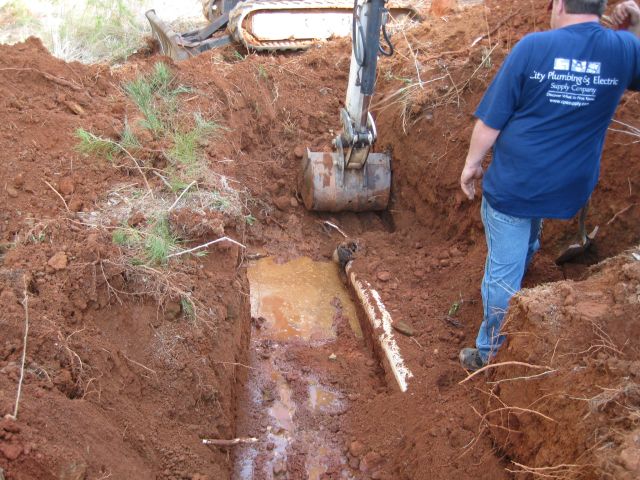
Prior to Pete beginning work I had wondered, idly, what he would do with the contents of the pipe – could be messy if it involved pumping or transferring. Actually the answer was simple – just dig a deeper trench next to the pipe and allow the contents to fill the trench and it all disappears when the excavation is backfilled. Towards the end of the pipe a couple feet from the tank we saw the problem – the pipe had been coupled with a collar to a short pipe which entered the tank, the two pipes had separated and a tree root had entered and grown in the pipe.
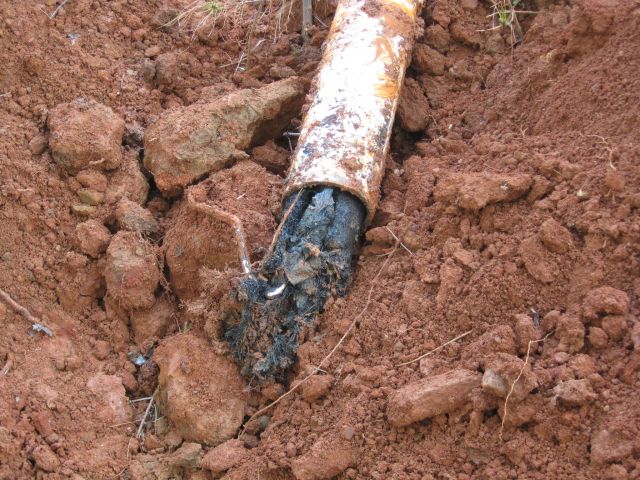
Pete said immediately that the “old boy” who installed the line had not glued the collar to the pipes and that was why the pipes had split. We looked at the collar and it had never been glued. So this was slip up #1 – 20 cents of glue (a small can is a few dollars and a couple brush strokes would have sufficed) would have avoided the aggravation. Pete had brought with him an inspection port which he connected to the new pipe and then he and his crew backfilled the trenches and the job was done.
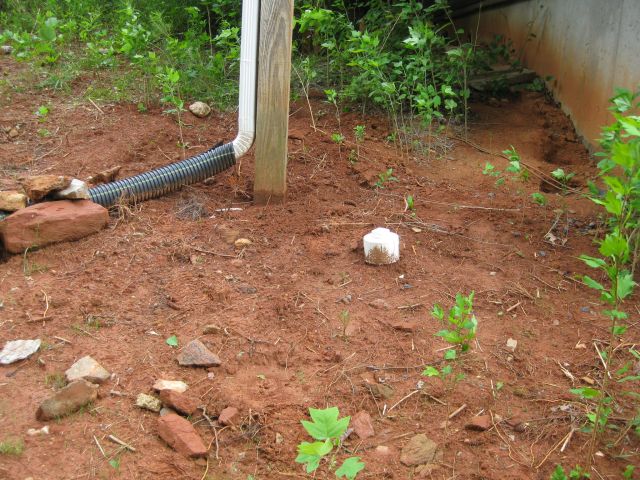
The inspection port is the white object to the right of the post. If I have a sewer problem again the first thing to do will be to unscrew the lid and look inside. If the chamber is empty then the blockage is in the house, if it is full (need to step back when you do this just in case!) then the blockage in either in the line or the tank is not discharging. For his two visits Pete charged a very reasonable $450 and I gave him and each of his crew a dozen fresh eggs from my free range chicken.
Finally, a quick note on construction slip up #2. Before purchasing the house I accompanied an inspector and one of his procedures was to ensure every post was on a solid foundation and he accomplished this by prodding the soil adjacent to the posts with a long half inch steel probe. All posts seemed fine. Yet during the sewer line work we discovered that the post near the sewer line was resting on soil, was not vertical and the deck, when I tested it with a level, was sloping down (slightly).
I have a hydraulic jack for working on my tractor.

I devised a plan to raise the deck and then I would straighten the post and place a concrete support below it. I purchased an 8 ft 6″ by 6″ post and some concrete slabs and dug a level base for the concrete slab, placed the jack on the slab and with the help of a buddy placed the post vertically on the jack and directly under the deck joists. I always have a buddy around when I am doing something potentially dangerous – in this case with the full weight of the deck on the new post on the small jack on the slab a miscalculation or sudden shift could explode out the post and jack and cause personal injury and property damage. I forgot to take a pic so here is a representation of the manoeuver.
With the main post raised a few inches I began digging under where it had stood to make a level pad for a new concrete block. And it was then I discovered that there was already a concrete footing – only problem it was about 4″ off from where it should have been. So when the house was built the post may have been located on the edge of the footing and had slipped off. This was construction slip up #2 located the concrete footing in the wrong place – carelessness I suppose and inadequate supervision. I placed a solid base under the post and hope this takes care of it.

